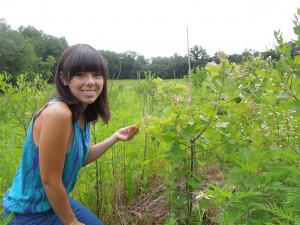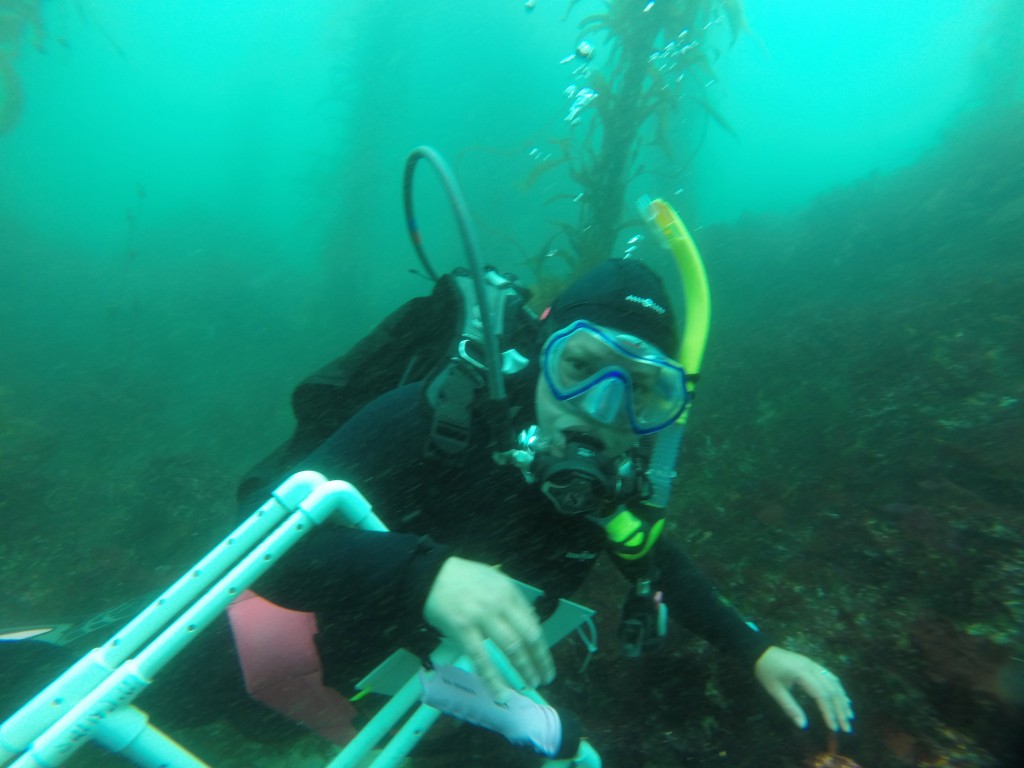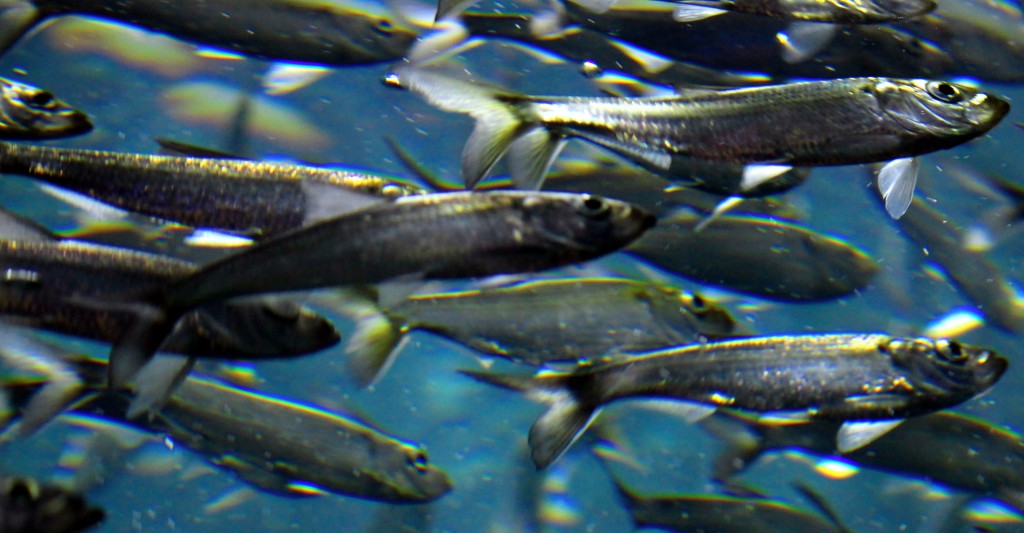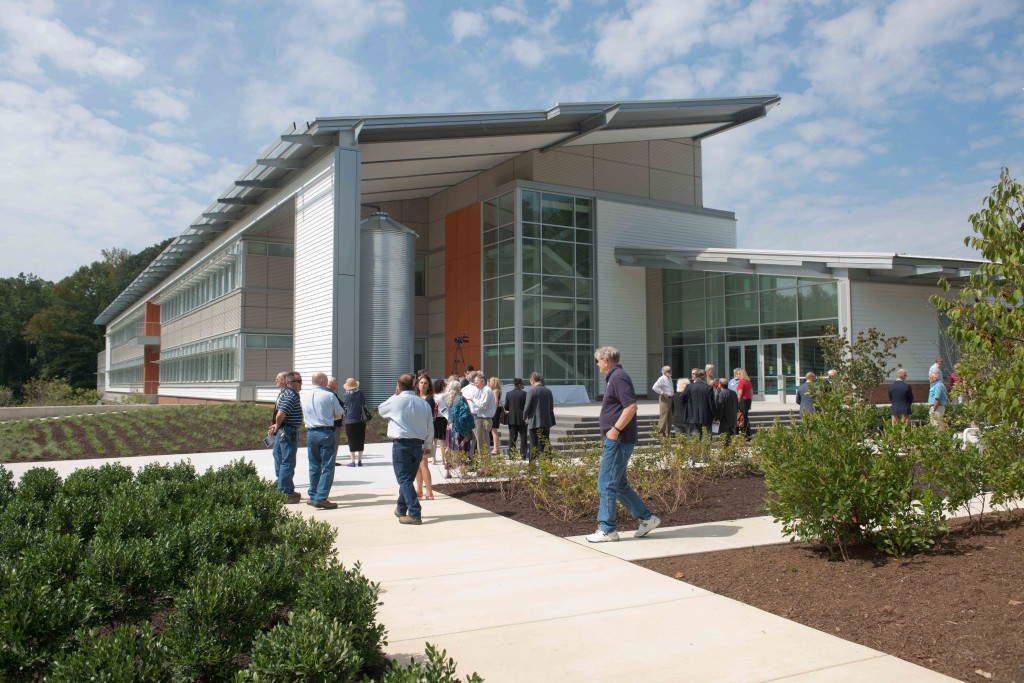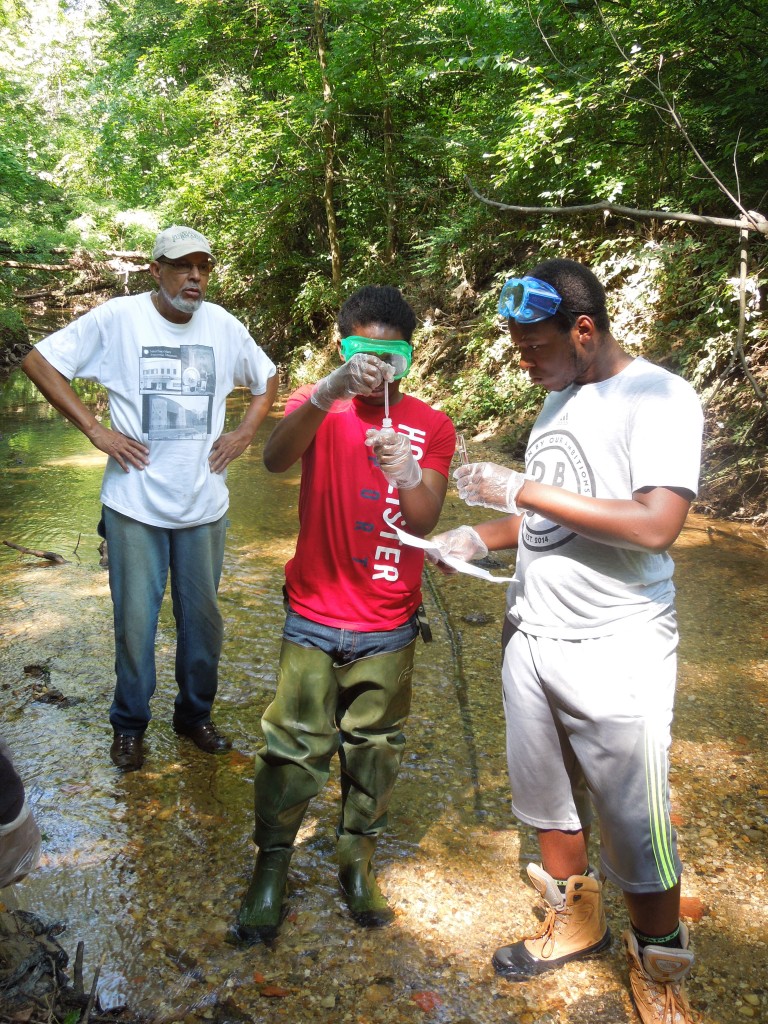by Kristen Minogue
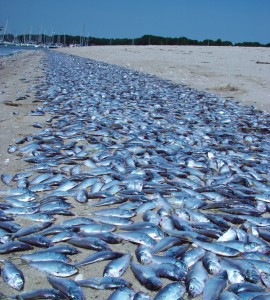
Menhaden fish kill in Narragansett Bay, Rhode Island. (Chris Deacutis)
A full 94 percent of the world’s dead zones lie in regions expected to warm at least 2 degrees Celsius by the century’s end according to a new report from the
Smithsonian Tropical Research Institute and the
Smithsonian Environmental Research Center published Nov. 10 in
Global Change Biology. The
paper states that warmer waters—mixed with other climate change factors—make for a dangerous cocktail that can expand dead zones.
Dead zones form in waters where oxygen plummets to levels too low for fish, crabs or other animals to survive. In deeper waters, dead zones may last for months, as with the annual summer dead zone in the Chesapeake Bay. Temporary dead zones may occur in shallow waters at night. The largest dead zones in the Gulf of Mexico and Baltic Sea can cover more than 20,000 square miles of the sea floor. The number of dead zones across the world is growing exponentially, doubling each decade since the 1960s.
“They’re having a big impact on life in the coastal zone worldwide,” said Keryn Gedan, a co-author and marine ecologist at the Smithsonian Environmental Research Center and the University of Maryland. “A lot of people live on the coast, and they’re experiencing more fish kills and more harmful algal blooms. These are effects of dead zones that have an impact on our lives.”
Click to continue »

